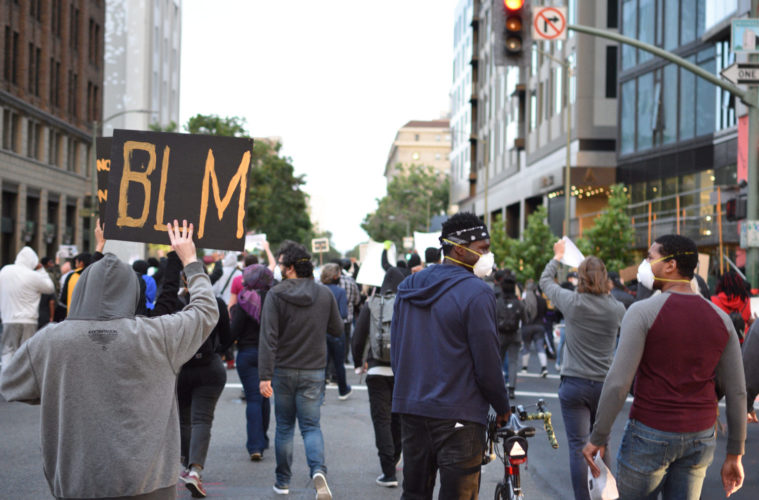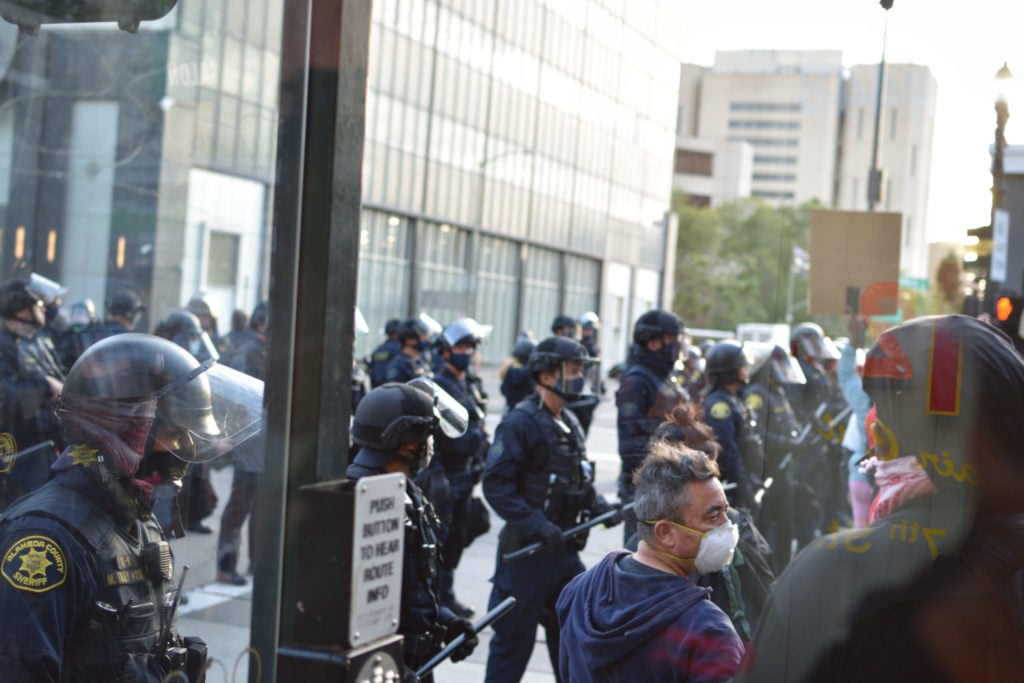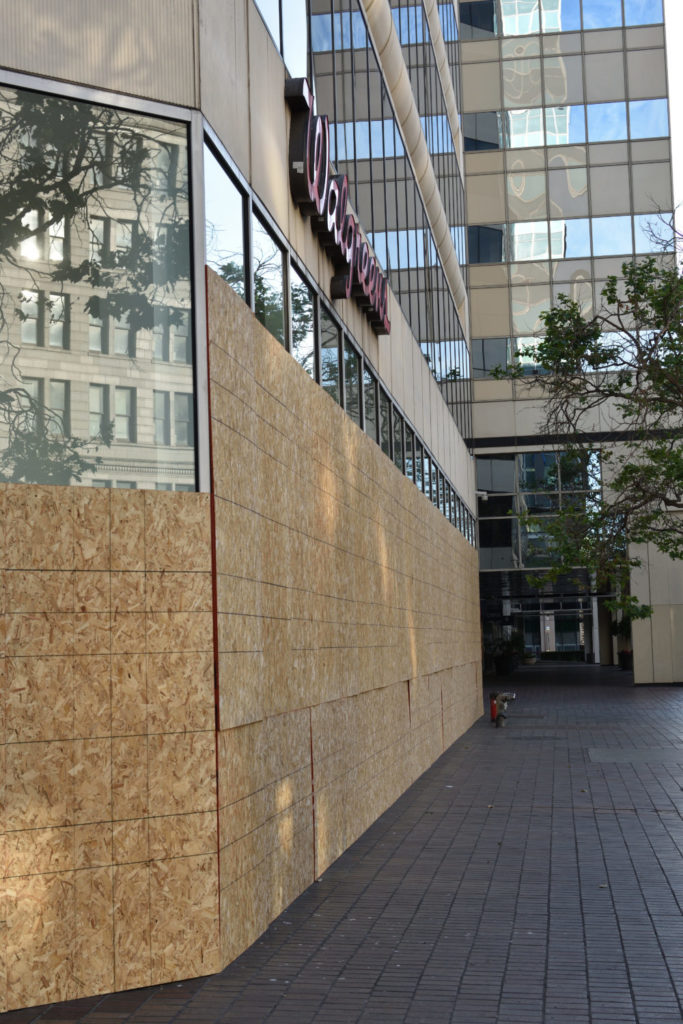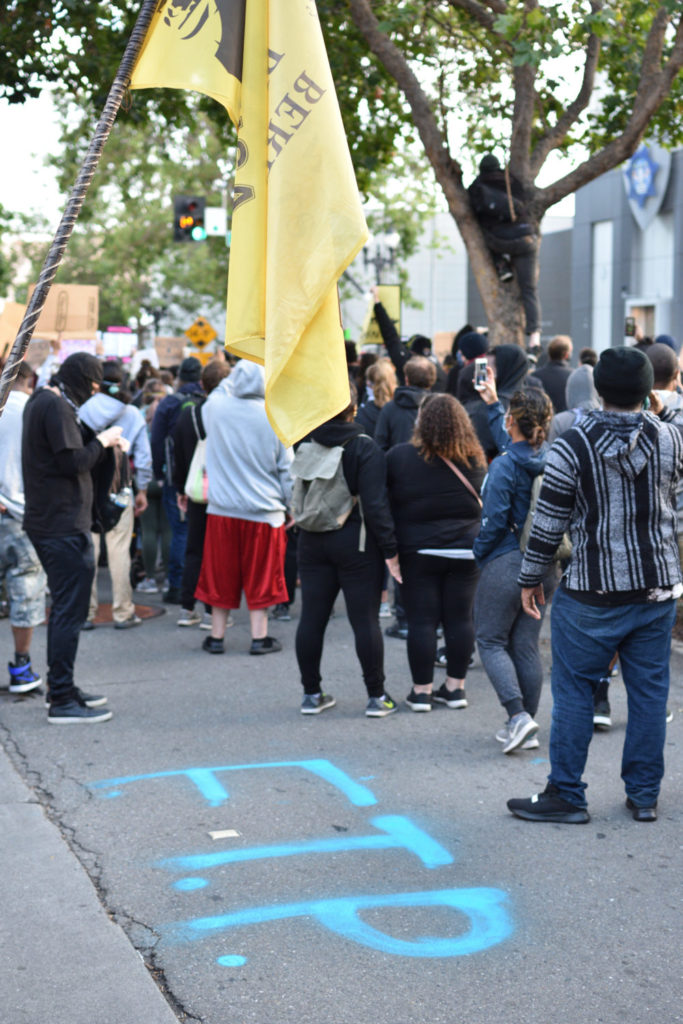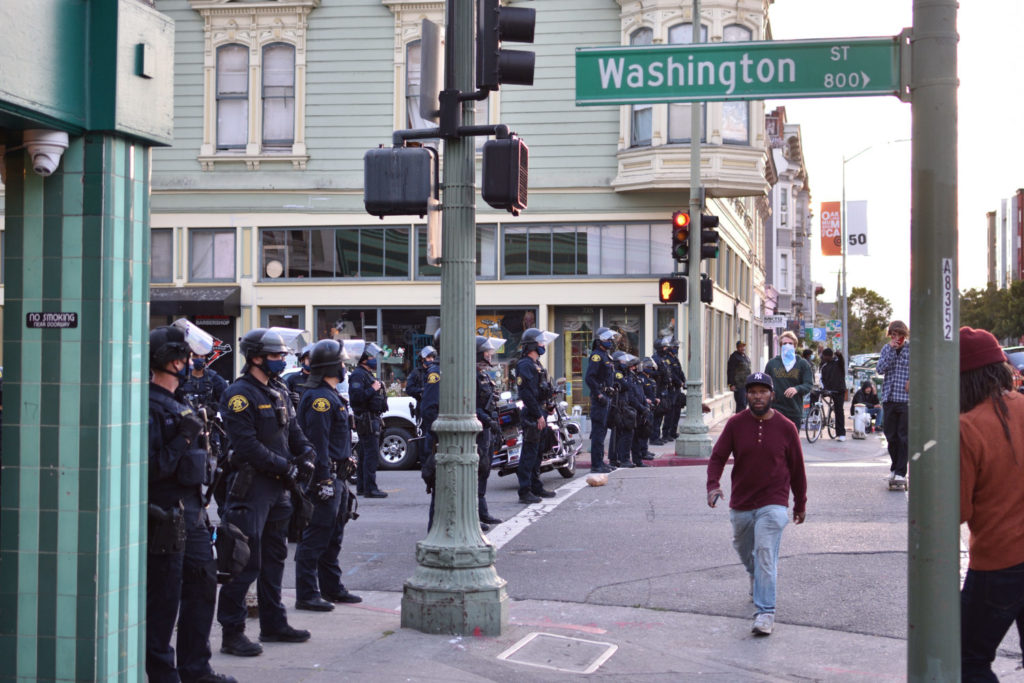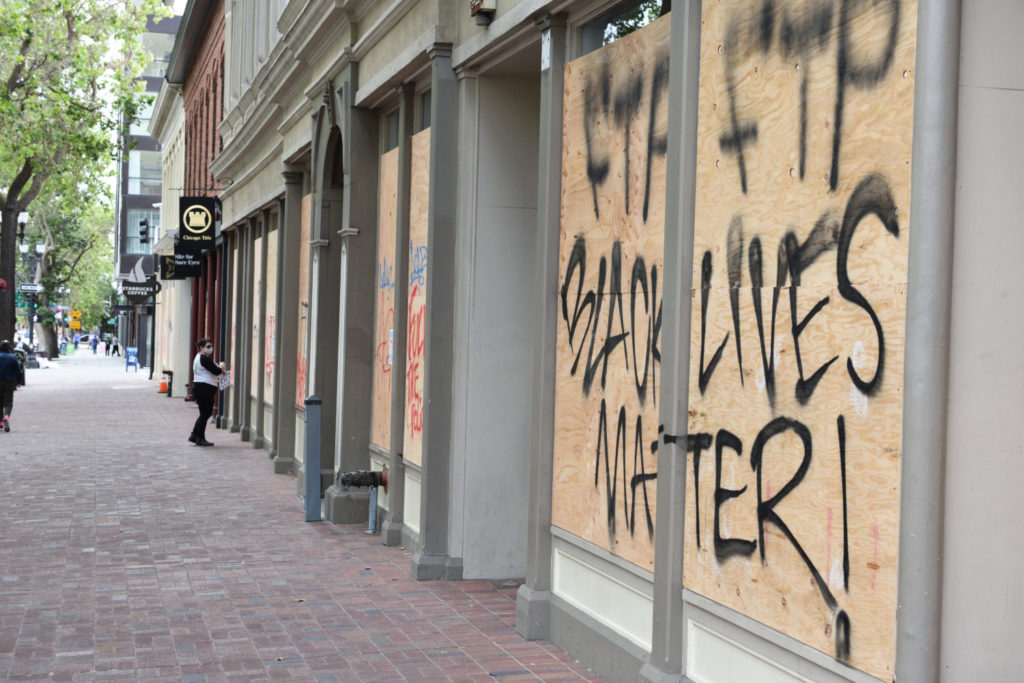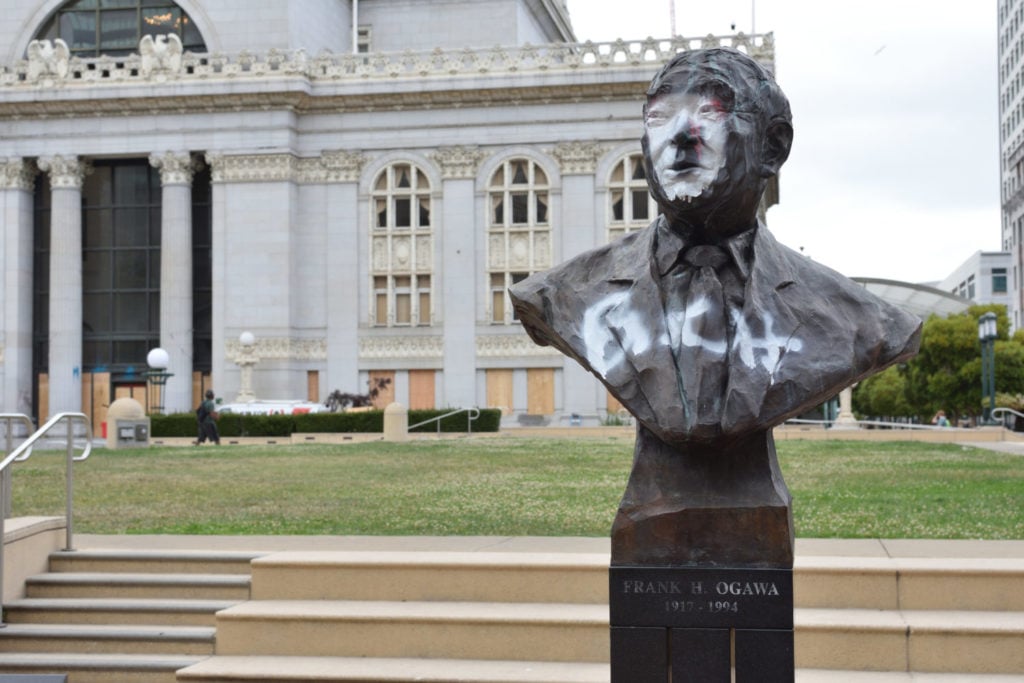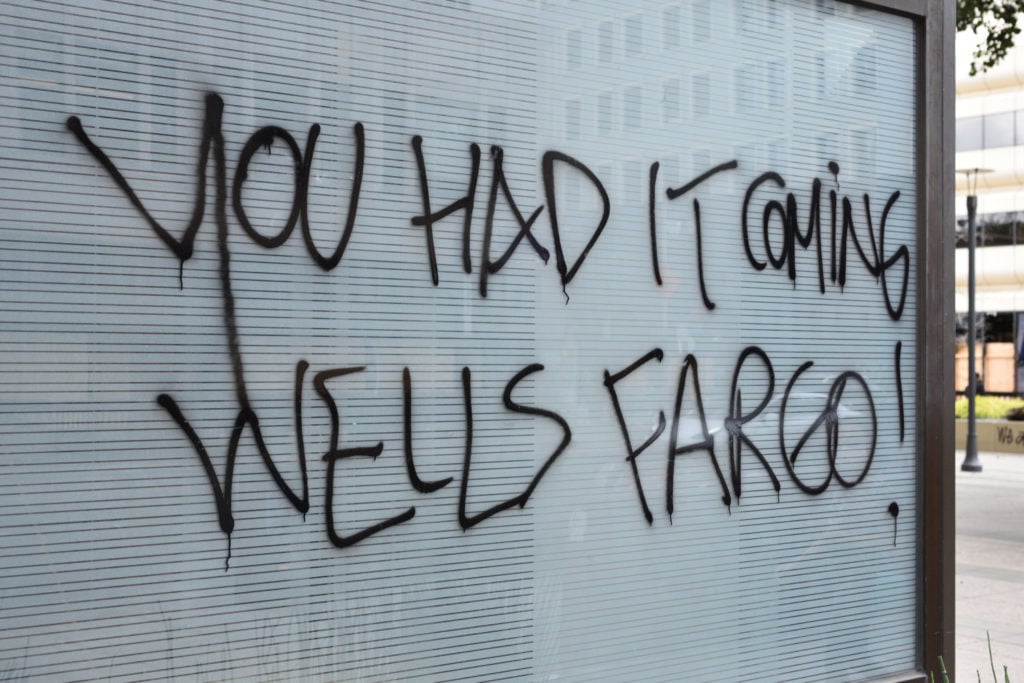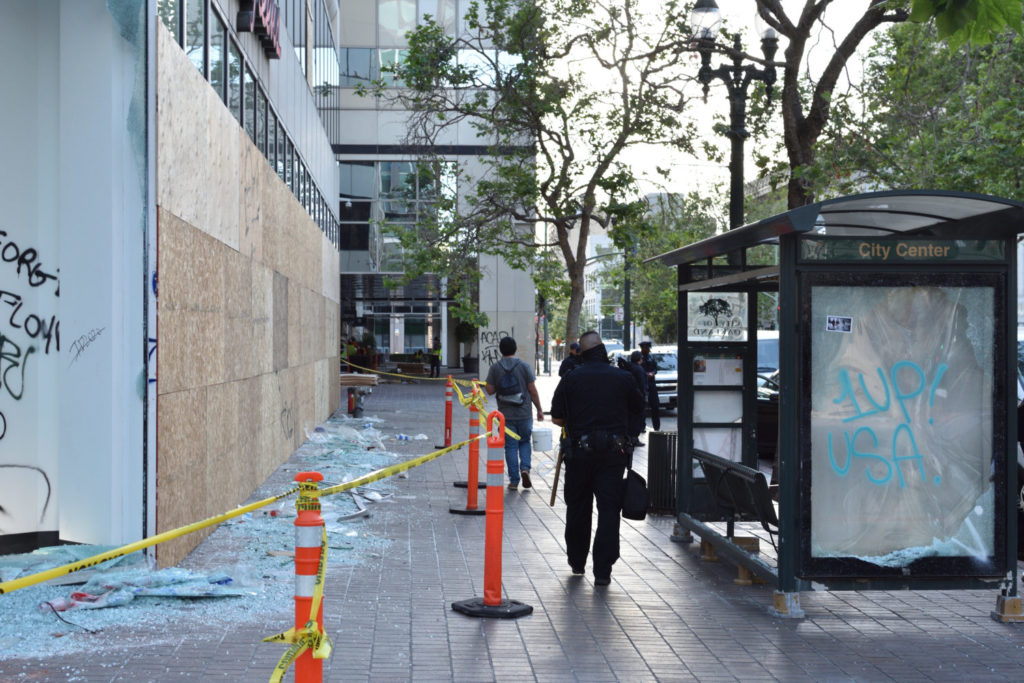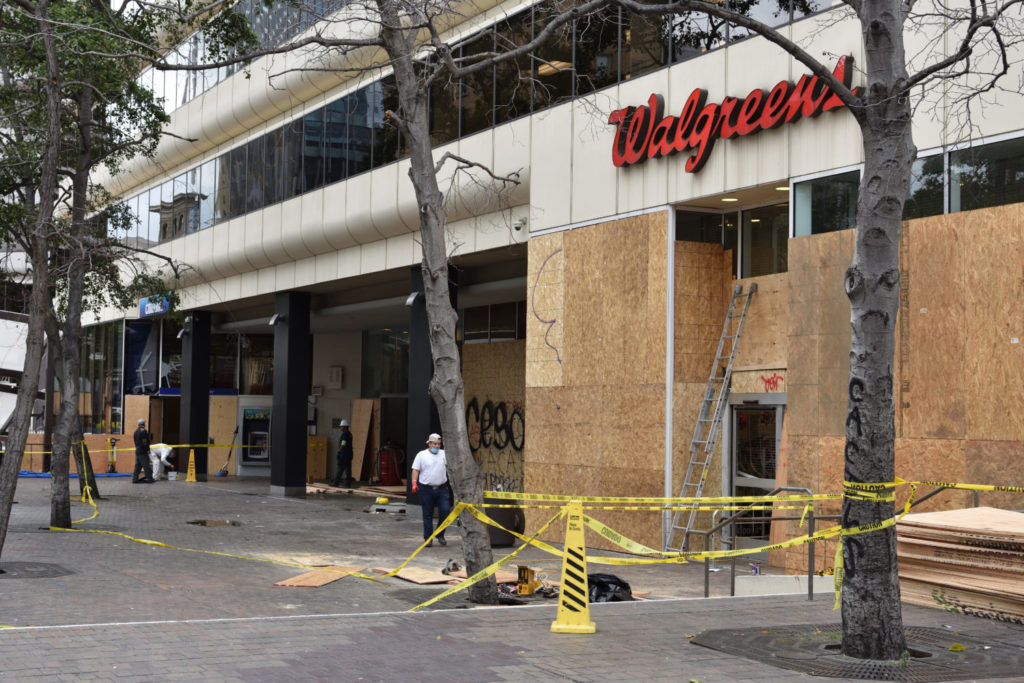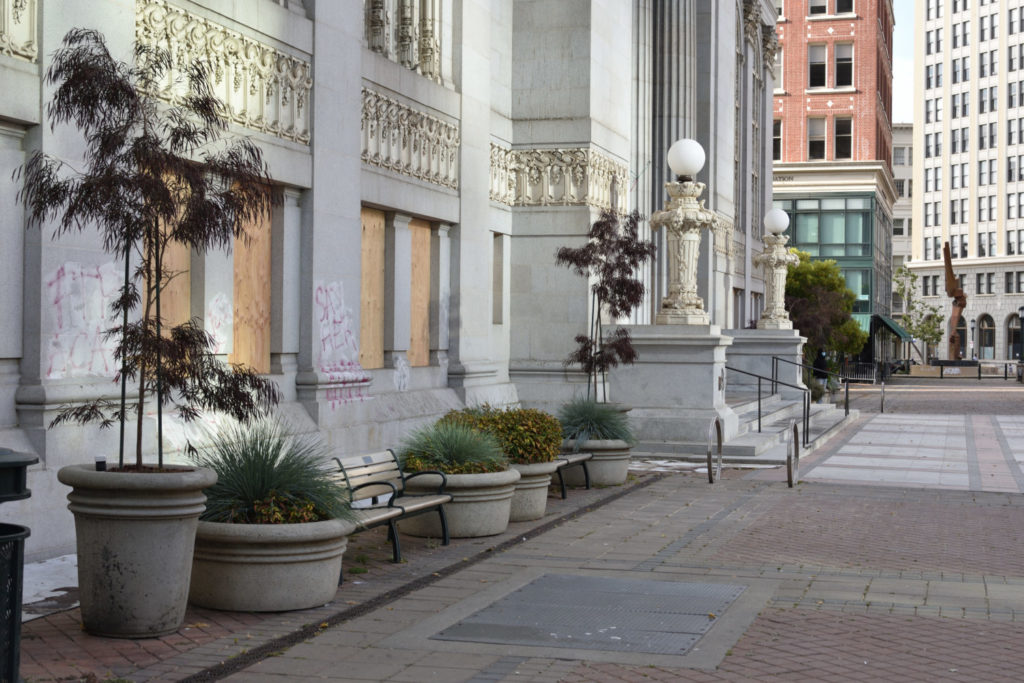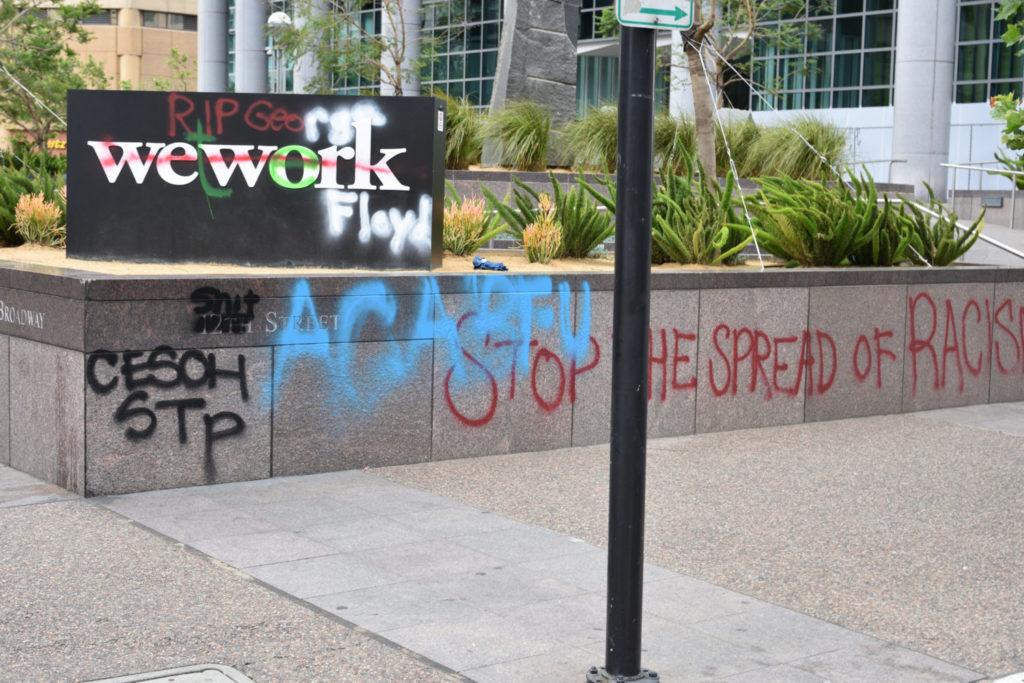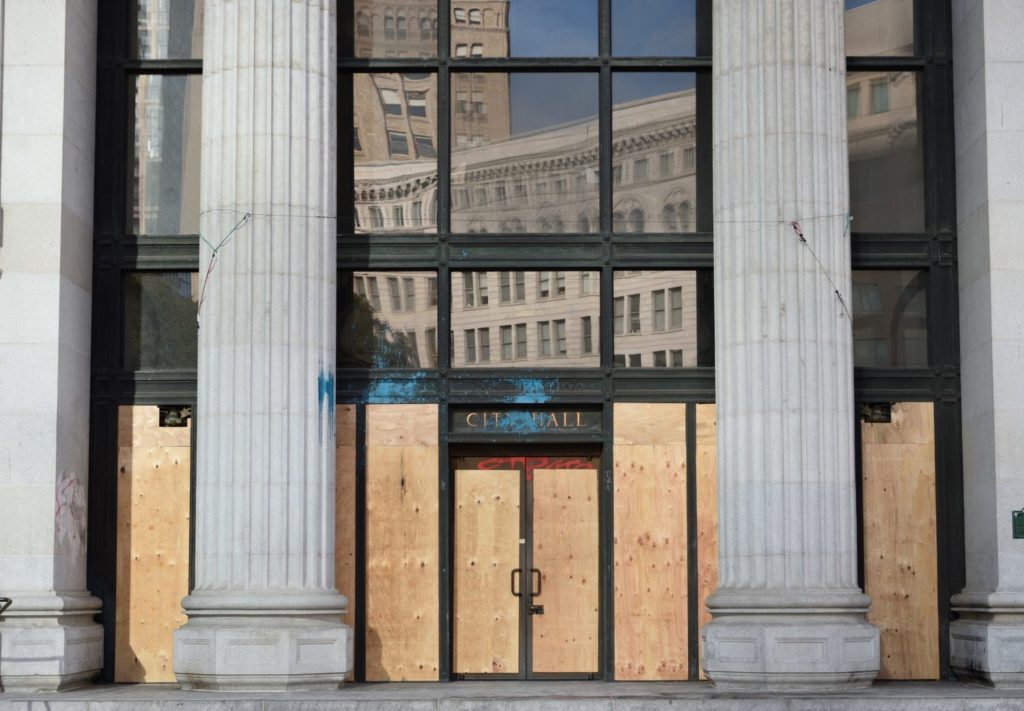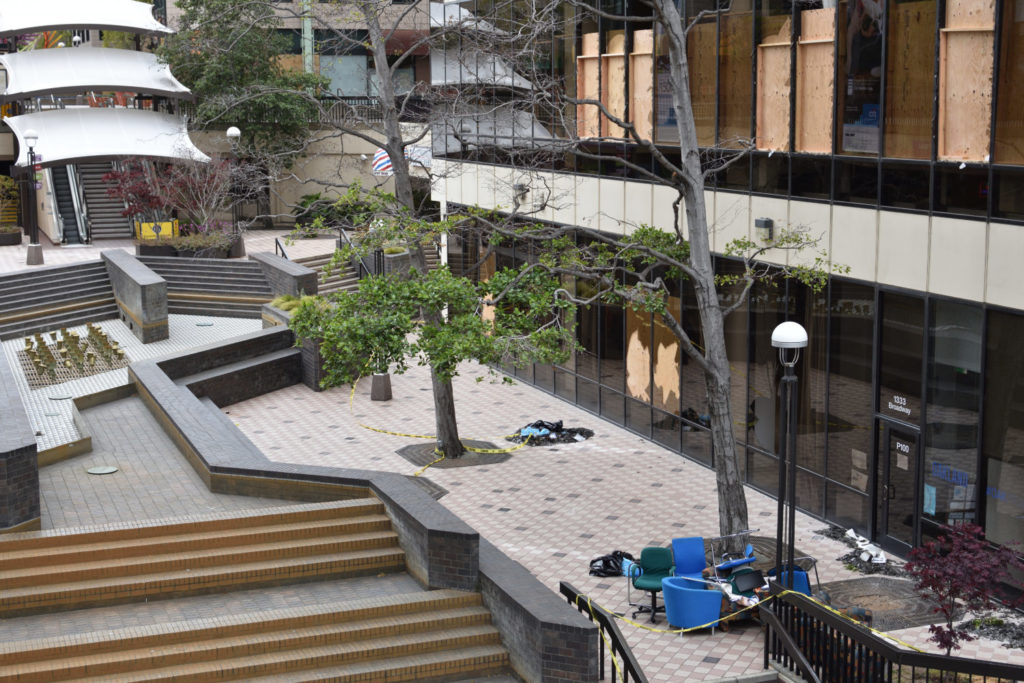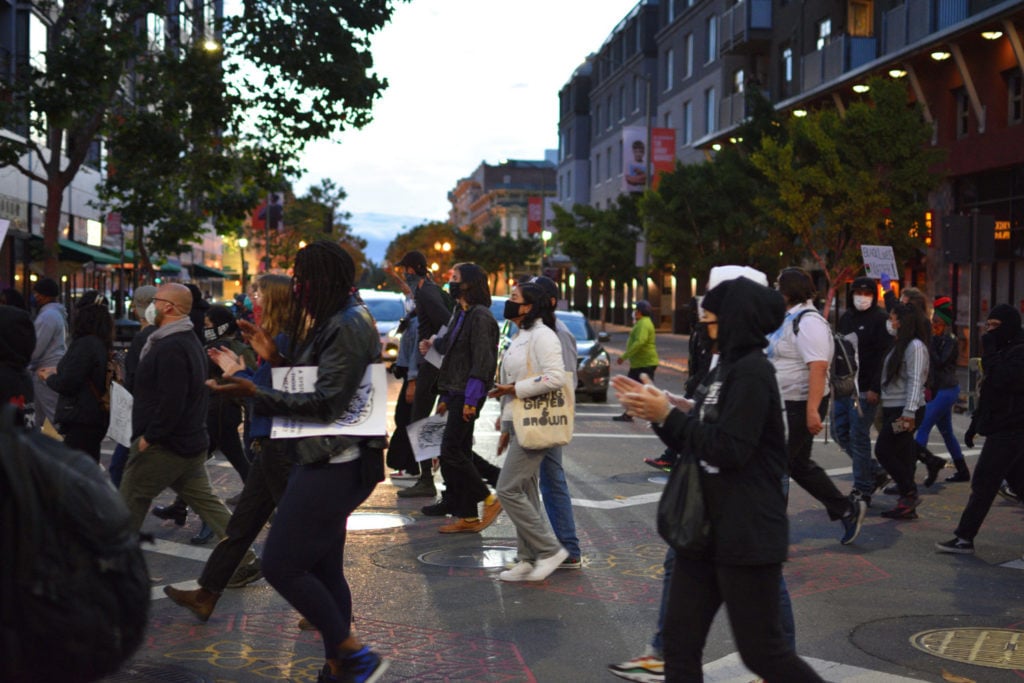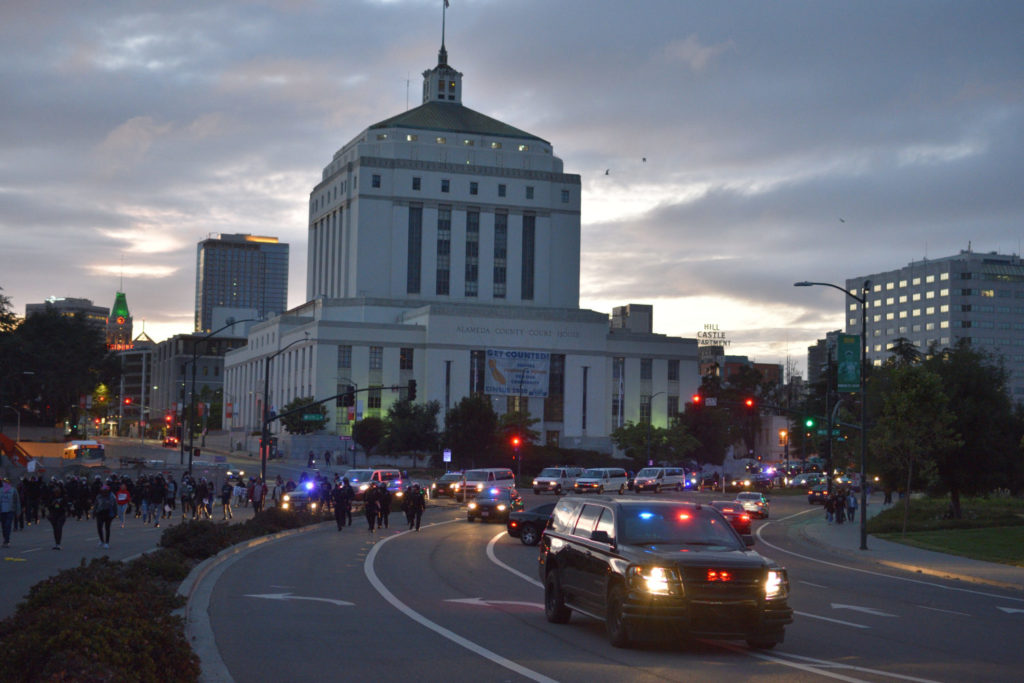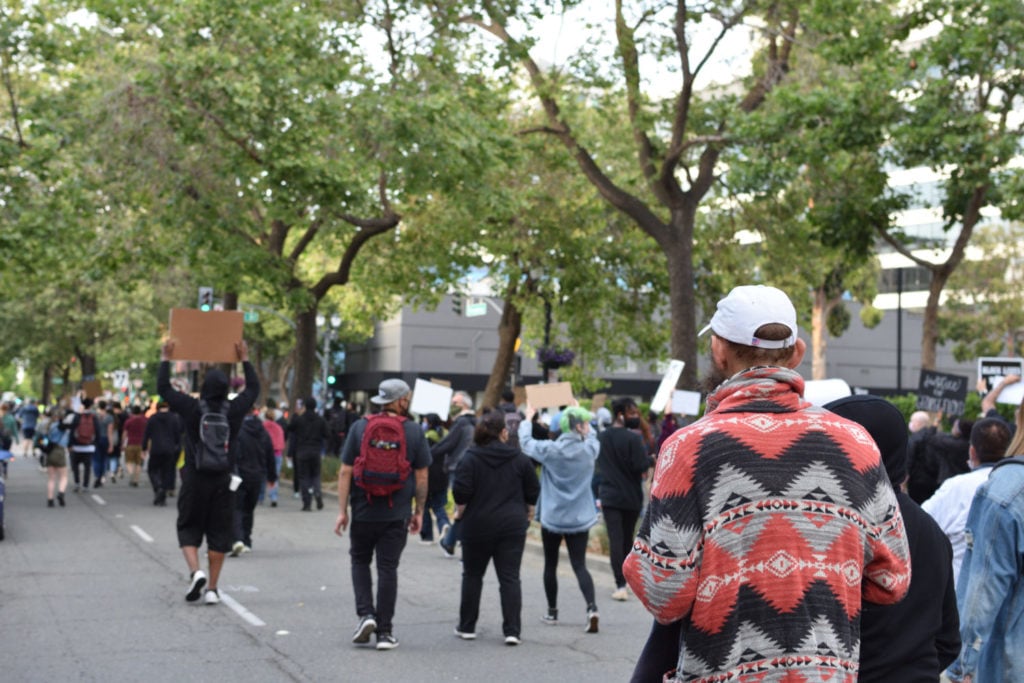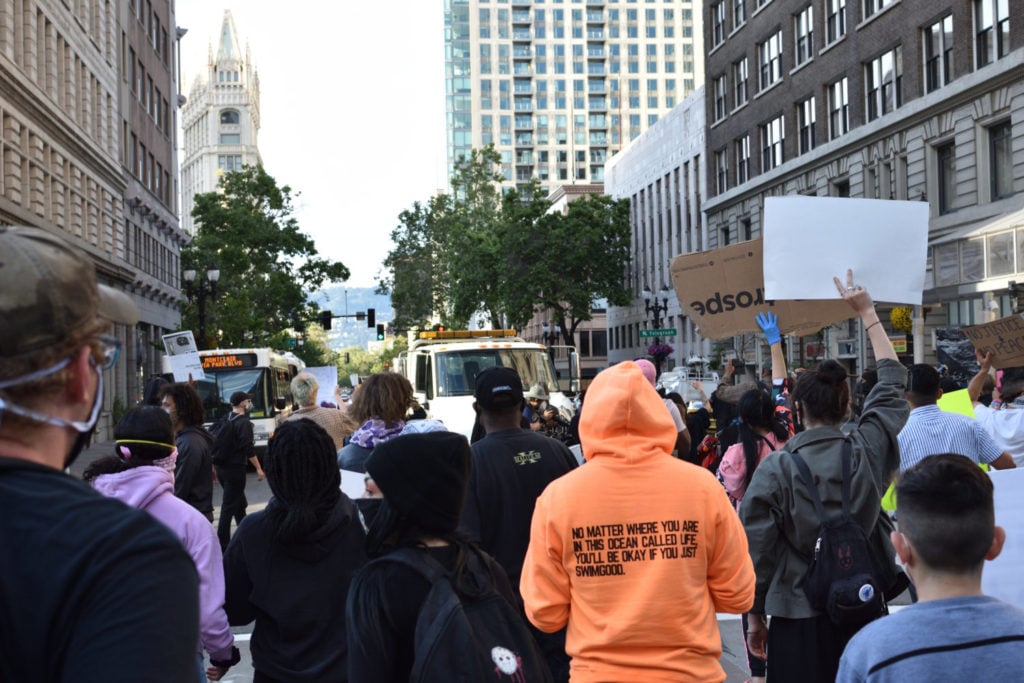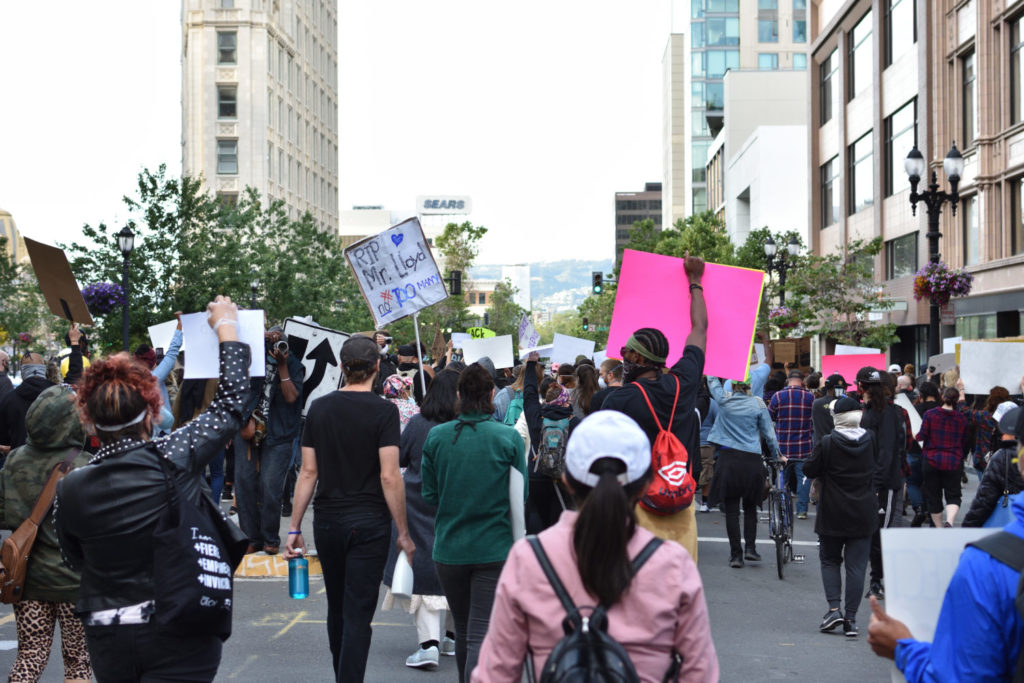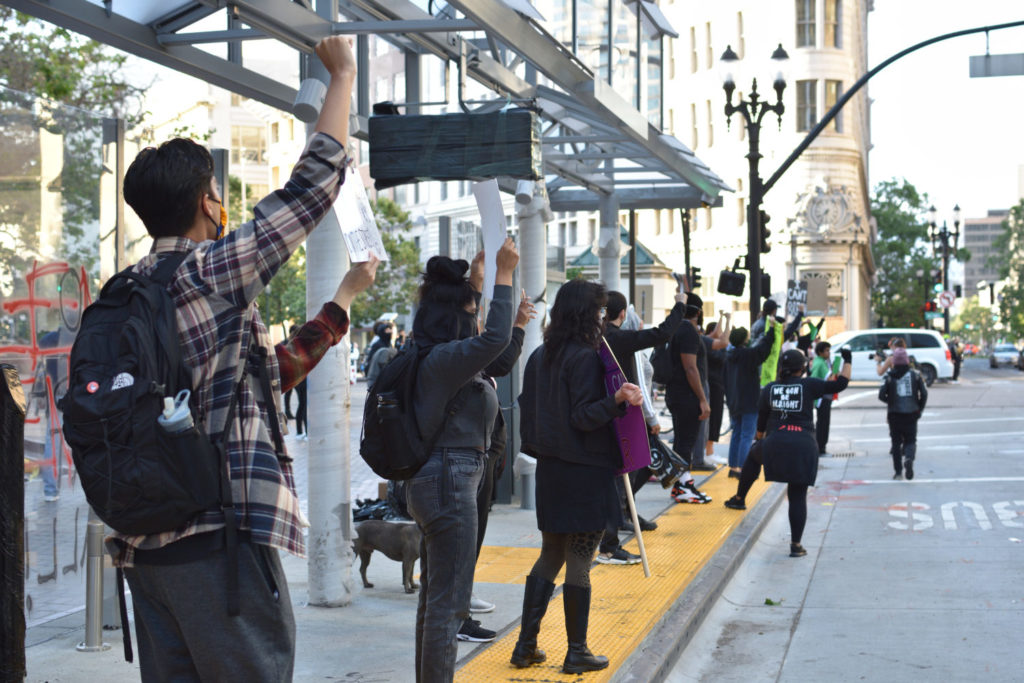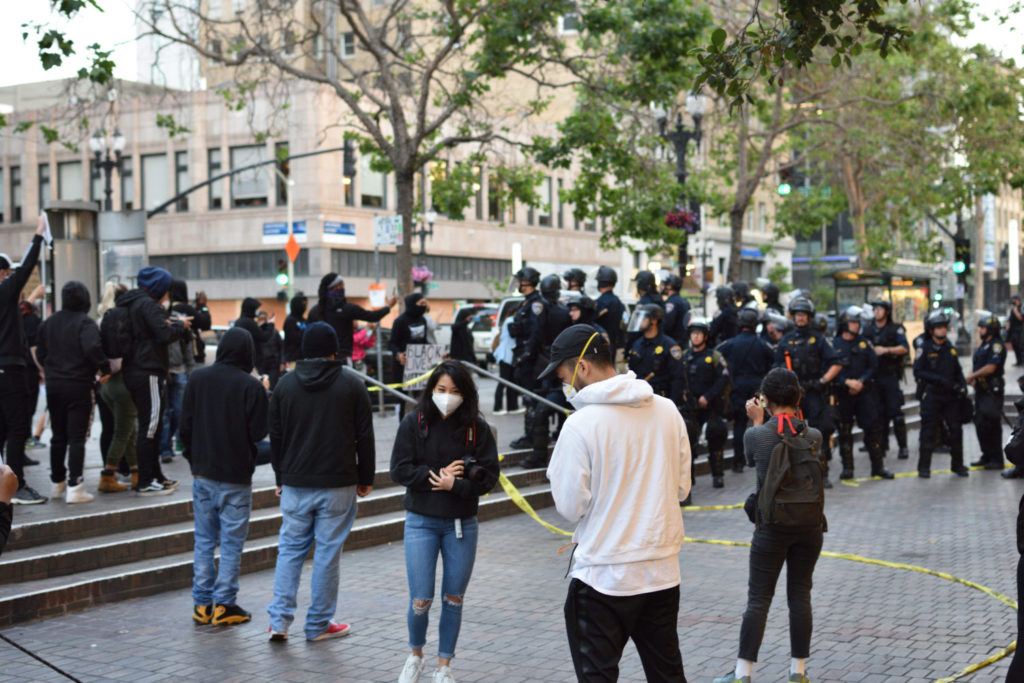As Angelenos and Americans took the streets to make their voices heard condemning the murder of George Floyd by police in Minneapolis, Oakland was again quick to show its support for reforming the criminal justice system that’s failed its community so many times over.
Over the last decade, the Bay Area has witnessed many young men of color lose their lives at the hands of police in questionable circumstances. Most famously, the death of Oscar Grant during the early house New Years Day 2009. Grant was shot by BART Police Officer Johannes Mehserle as he was in a prone postiton on the concrete at the Fruitvale BART station.
At the time, Twitter was only a few years old and the social media channels and voices that have amplified so many similar stories over the last decade just weren’t there yet. One can only imagine the uproar Grant’s death would cause a decade later. But back in 2009, it set off a wave of protests locally. During those protests, numerous businesses were destroyed by a new generation of anarchists. The protests would serve as a coming out party of sorts for them. It would be a prequel chapter to the factionalization of protests around things like criminal justice reform and eventually economic empowerment once Occupy kicked off.
As Americans all got cameras in their pockets and the world became more aware of what was happening to unarmed black men during encounters with law enforcement, Oakland was there in solidarity each time a new name was burned into the minds of those who hoped to see reform. Whether by videos of these police encounters that keep happening to this day, or just the absurdity of young teenagers dying over and over again in circumstances that don’t happen to white kids.
George Floyd
The murder of George Floyd would be no different. As Californians enter their second week of marching in protest, we’ll look back at how things started in Oakland last week. As the video of Floyd’s death circulated, his cries of “I can’t breath” gave us flashbacks to what happened to Eric Garner over loose cigarettes. Oakland organized for a massive Friday night protest, but it would just be a precursor to even larger demonstrations throughout the week.
It would start hours ahead of schedule as criminal justice reform advocates lined the sidewalks on all four corners of 14th and Broadway. The intersection serves as Oakland’s spiritual center for celebration, mourning and grievance.
- The Oakland Police’s first skirmish line of the week.
- Walgreen thought they were ready for Friday night.
- The protest’s first time at OPD last Friday.
- A second skirmish line protecting an alternate route to the Oakland Police Department.
As the numbers quickly grew, they took to the streets. First, the initial mass of hundreds traveled north on Broadway. Several blocks later the crowd switched directions and started heading south towards Oakland Police headquarters. As we reached the intersection of 7th and Broadway, we encountered the first of many riot police skirmish lines the city would see over the course of the week’s protesting.
And this was all before things were even scheduled to kick off. Eventually, the group would travel north to reconvene with more folks that had arrived for the original 7 p.m. start time. As the crowds converged, the protest doubled in size.
After another generally peaceful march around town the march approached the highway, officers had formed a skirmish line to prevent the protest from walking onto Interstate 880 with traffic. The march would continue under the overpass and to an exit ramp that was undefended. Thousands walked into oncoming traffic, immediately halting travel. As the cars stopped, hundreds jumped the median shutting down both sides of 880. The protest had successfully stopped traffic and not long after the first salvos of fireworks would start.
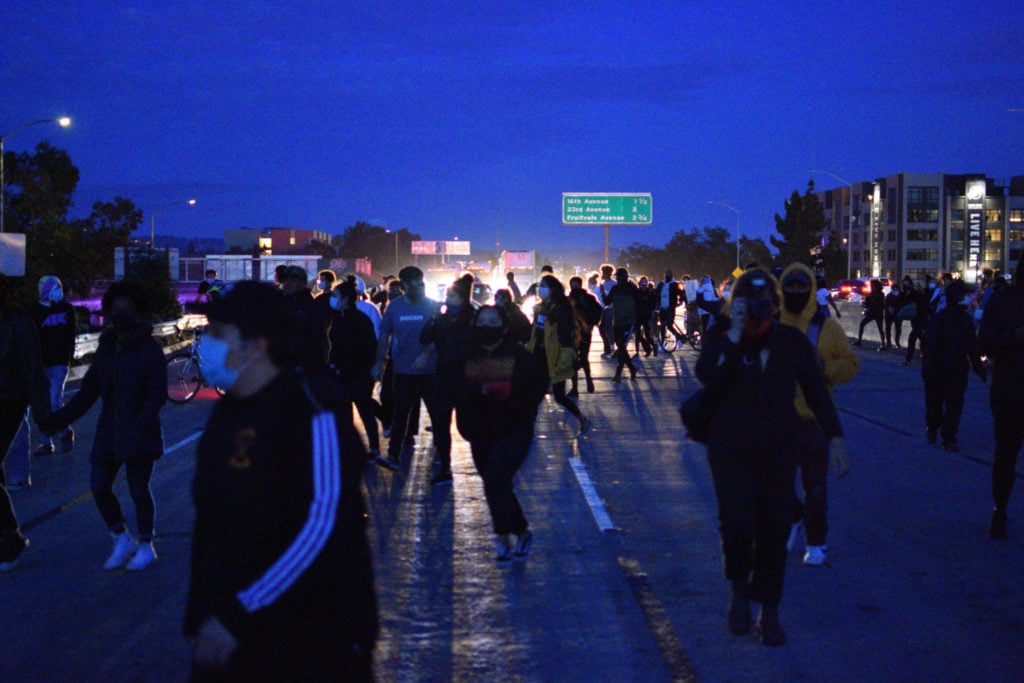
Interstate 880
At that point, we saw the first flashbangs of the week. The crowd on the highway split into three groups. Most walking off the highway the way they came on, others hit the next exit ramp. Much of the first group returned to the skirmish line underneath the opposite side of the overpass. The other group split. Some remained at the police station, the rest converged back on Chinatown to unite with the main body of protesters.
The largest group of protesters heard things were starting to go downhill at the police station. While heading that way, the police station group was dispersed with likely some of the first cans of tear gas the West Coast saw during the ongoing protests. That police station group would head east to meet the larger group, then the whole group moved back towards 14th and Broadway. One literal dumpster fire and a dash of tear gas later everyone was back at the park.
After arriving back at Frank Ogawa Plaza, the vibes would turn the moment the first bits of plywood were ripped from Walgreens windows. A chorus of smashing commenced. The minority got its cheers, from those who might not pick up a rock but revel in the moment. Eventually, all those who had come to protest the death of George Floyd had mostly departed, but the destruction continued into the night.
Aftermath
I returned the next morning to survey the damage. The bulk of the downtown business district had been covered in graffiti. The larger the corporate entity or point of authority, the more smashing. This was proven with what happened at Chase and Citi banks downtown locations. In the banks, the destruction is the most political since there isn’t really anything to gain by destroying it. While someone might run out of Walgreens with some $15 beef jerky, your average anarchist isn’t cracking the vault at Citi.
- Walgreens on Saturday.
- Oakland City Hall
- Citibank
Night Two
After the cleanup efforts, and fresh plywood across downtown, the protesters convened again at 14th and Broadway early in the evening on Saturday. It would start much of the same way. The cars honking in support, the group getting big enough to take to the streets. Eventually again reaching the police station for the second night. But this night would see the marchers cut across Oakland.
The crowd would work its way along the lake to International Boulevard, one of East Oakland’s main thoroughfares. A few blocks down International the crowd wanted to turn back. The police denied them the opportunity and ordered the march to continue down International via a loudspeaker. The march took two lefts to get back behind the police escort then marched 4.4 miles to Emeryville. The looting again commenced, but the vast majority of the march was a peaceful protest.
- Night two’s first wave.
In the following days more and more people took to the streets. Sunday night waves of looting would prove to be the most targeted of all. Then finally on Monday Oakland got its curfew, but it’s only done so much to quell the activity as police have dispersed gas the first two nights of curfew.
But regardless, the George Floyd protest in Oakland will be remembered as thousands from a city that has experienced more police brutality than most coming out to support people of color not dying unjustly at the hands of law enforcement.
Advertising disclosure: We may receive compensation for some of the links in our stories. Thank you for supporting LA Weekly and our advertisers.

